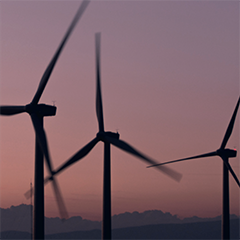The real value of condition monitoring
Before considering the impact that condition monitoring systems (CMS) have on our industry, it is important to first establish what CMS entails and how it came to be such an established piece of hardware in the renewable energy sector.
A condition monitoring system would normally comprise of a series of sensors strategically placed on fundamental components to sense the state of this component relative to a known benchmark or healthy state. These sensors send signals to a piece of hardware or circuitry for processing and distribution. A condition monitoring system can be described as analogous to the human nervous system.
Our nerves detect when something is not normal, normally through the perception of pain and the nervous system relays this message to the brain. The brain then decides on the best approach to protecting the body from this source of pain. In this same way, our condition monitoring sensors, based on some pre-programmed parameters on acceptable, detects when something moves away from this, sends a signal to a motherboard which will make a decision on how to protect a component, normally via raising an alarm, or in an extreme case, shut down of an electrical component.
In the wind industry a condition monitoring system is widely used to provide health information on the rotating drivetrain components. The drivetrain of a wind turbine generator is an expensive but important component of the energy generating system. In the case of a geared machine it is composed of the main bearing, main shaft, gearbox, brake, generator shaft, and generator. Direct-drive machines do not comprise of the gearbox section; however, the complexity of the arrangement remains. The multi-physical complexity of this arrangement, the expense involved in downtime and maintenance due to failure, ensures that it is both recommended and normal for turbines to have several measures in place to monitor the health of the components.
The real value of condition monitoring
Before considering the impact that condition monitoring systems (CMS) have on our industry, it is important to first establish what CMS entails and how it came to be such an established piece of hardware in the renewable energy sector.
A condition monitoring system would normally comprise of a series of sensors strategically placed on fundamental components to sense the state of this component relative to a known benchmark or healthy state. These sensors send signals to a piece of hardware or circuitry for processing and distribution. A condition monitoring system can be described as analogous to the human nervous system.
Our nerves detect when something is not normal, normally through the perception of pain and the nervous system relays this message to the brain. The brain then decides on the best approach to protecting the body from this source of pain. In this same way, our condition monitoring sensors, based on some pre-programmed parameters on acceptable, detects when something moves away from this, sends a signal to a motherboard which will make a decision on how to protect a component, normally via raising an alarm, or in an extreme case, shut down of an electrical component.
In the wind industry a condition monitoring system is widely used to provide health information on the rotating drivetrain components. The drivetrain of a wind turbine generator is an expensive but important component of the energy generating system. In the case of a geared machine it is composed of the main bearing, main shaft, gearbox, brake, generator shaft, and generator. Direct-drive machines do not comprise of the gearbox section; however, the complexity of the arrangement remains. The multi-physical complexity of this arrangement, the expense involved in downtime and maintenance due to failure, ensures that it is both recommended and normal for turbines to have several measures in place to monitor the health of the components.
To read the full content,
please download the PDF below.















